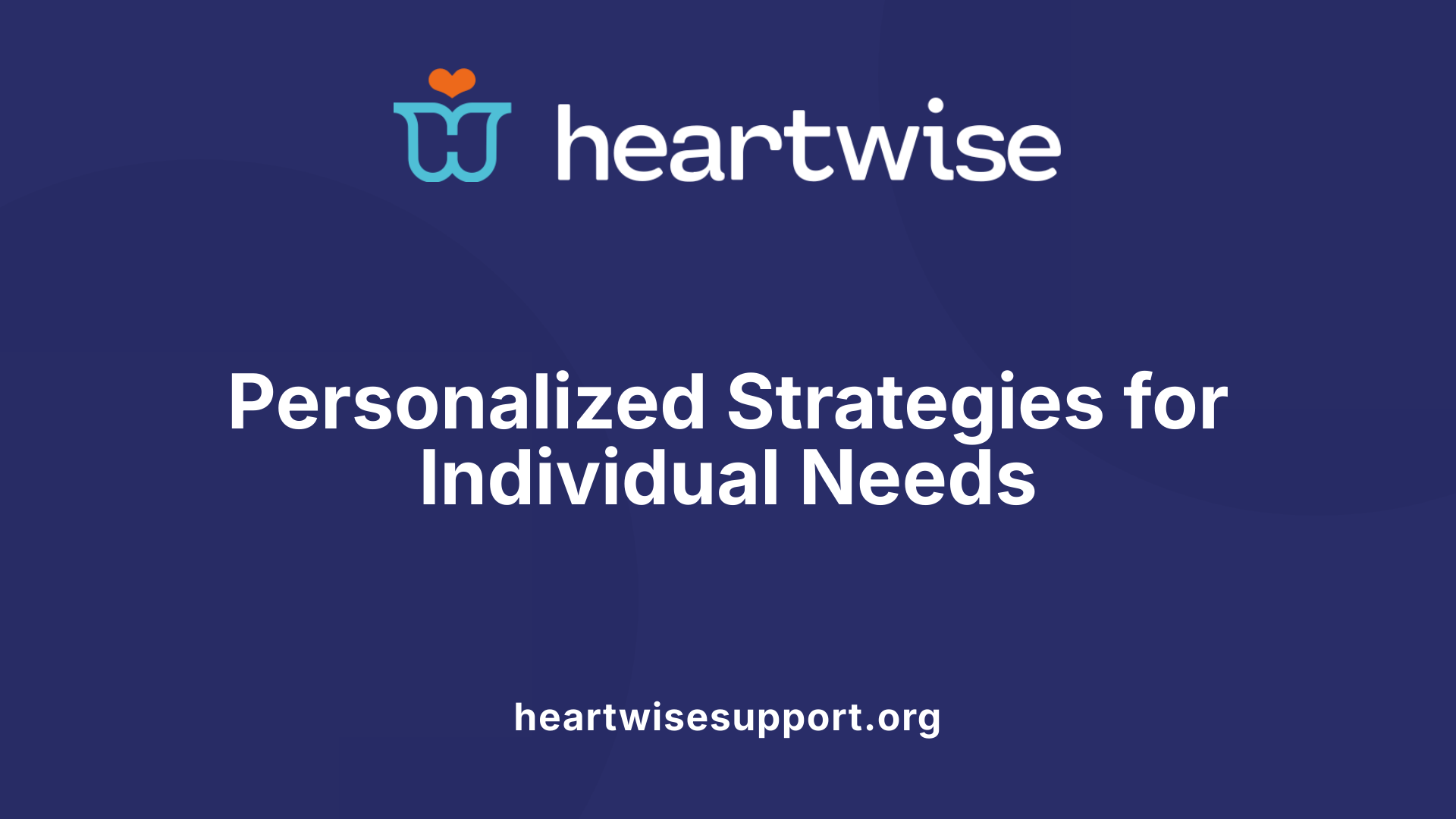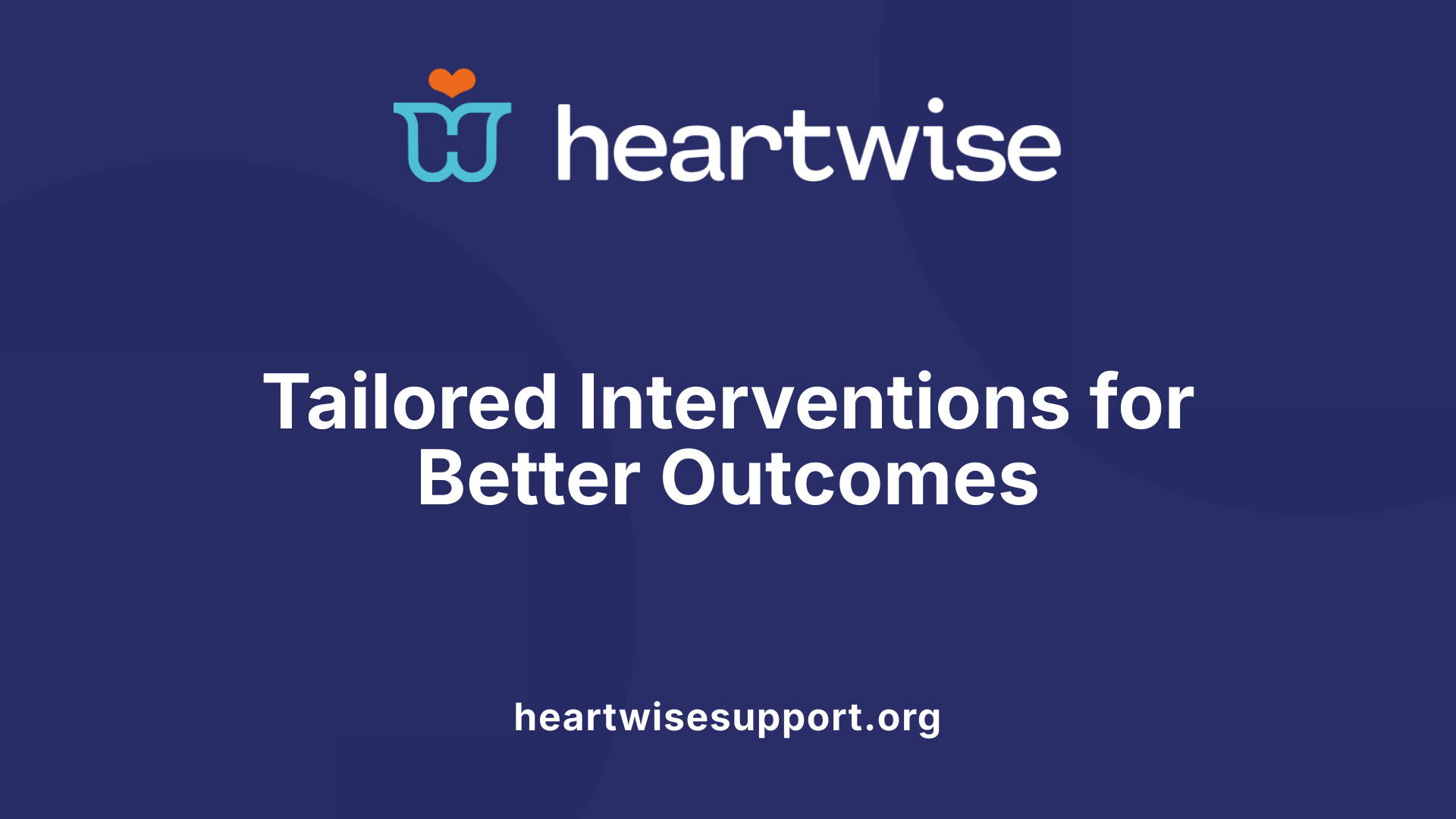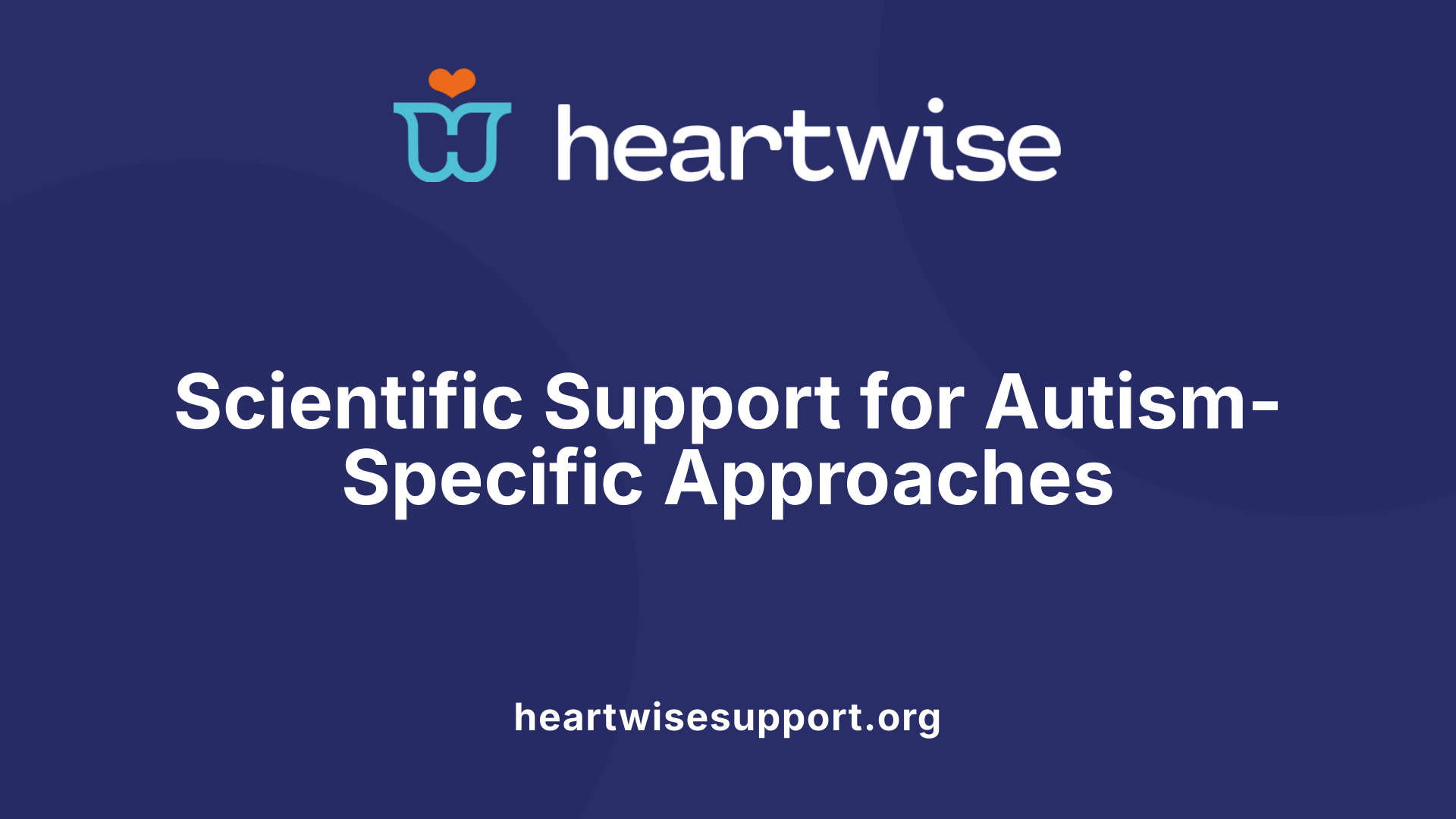Understanding Autism-Specific Therapeutic Approaches
Autism spectrum disorder (ASD) presents unique challenges in communication, social interaction, and behavior, requiring tailored mental health therapy approaches. Recognizing the diversity within the spectrum and individual differences, professionals emphasize the importance of personalized interventions that address specific strengths, challenges, and goals. This article explores the various therapy methods designed for autistic individuals, how they are adapted, their evidence base, and strategies to support mental health and social functioning effectively.
Common Autism Therapy Approaches and Their Personalization

What are common autism therapy approaches and how are they adapted for individual needs?
There are several widely used autism therapy methods, each designed to help individuals develop crucial skills in communication, social interaction, and daily living. Behavioral interventions like Applied Behavior Analysis (ABA), Pivotal Response Treatment (PRT), and Discrete Trial Training (DTT) focus on modifying behaviors through reinforcement and structured teaching.
Developmental therapies, such as the Early Start Denver Model (ESDM), Floortime, and Relationship Development Intervention (RDI), emphasize naturalistic interactions, emotional connection, and fostering social-emotional growth. These approaches are often highly flexible and can be adapted based on the child's age, interests, and developmental profile.
Speech-language therapy works on improving communication skills, including speech, language, and alternative communication strategies, while occupational therapy helps enhance daily living skills like dressing and fine motor coordination.
Cognitive-behavioral therapy (CBT), including mindfulness practices, is used to assist with managing co-occurring mental health issues like anxiety and depression. These therapy types are personalized by incorporating visual aids, clear language, sensory considerations, and involving family members.
Personalizing autism interventions involves detailed assessments of each individual’s strengths, challenges, sensory preferences, and goals. Treatment plans are crafted to target specific needs and adjusted over time based on progress.
Familial involvement and parent training are essential components, enabling caregivers to support skill development and maintain consistency at home.
Recent research highlights the importance of understanding biological subgroups within autism, based on genetics, immune responses, and metabolic profiles. Such insights facilitate more targeted and effective interventions, moving toward precision autism therapy.
Overall, the goal of personalized autism therapy is to foster independence, improve quality of life, and support emotional and social well-being by tailoring strategies to each person’s unique phenotype and developmental trajectory.
Traditional Versus Autism-Specific Therapies

How do traditional and autism-specific therapies compare?
Traditional therapies generally adopt a broad approach, often employing group settings that focus on achieving general developmental milestones such as social interaction, coordination, and basic communication. These methods tend to emphasize a one-size-fits-all model, which can sometimes overlook the unique needs of each individual. As a result, real-time adjustments to therapy plans may be limited, and the focus remains on overall progression.
In contrast, autism-specific interventions like Applied Behavior Analysis (ABA) are designed to be highly personalized. They rely heavily on data collection, continuous assessment, and precise tailoring of strategies to target specific challenges such as language delays, social skills deficits, and behavioral issues. Techniques like positive reinforcement and task analysis are central to these approaches, with the goal of promoting meaningful progress in areas most impacted by autism.
Research supports the effectiveness of autism-focused therapies, particularly ABA, which has been backed by over 35 years of scientific studies as the only treatment with a strong evidence base for addressing core autism symptoms. These therapies involve close family collaboration, structured routines, and measurable goals to track progress.
Beyond ABA, other autism-centered therapies include social skills training, speech and occupational therapy, and developmental approaches that integrate various strategies tailored to individual strengths and needs. Creative therapies like music or art therapy are also often incorporated, where appropriate.
While traditional methods can offer valuable developmental support, autism-specific interventions are evidence-based, more targeted, and adapted to meet the complex and diverse needs of autistic individuals. This personalized focus typically results in more effective outcomes, promoting better communication, social functioning, and independence.
Evidence Supporting Autism-Focused Therapies
 Different autism-specific treatment strategies have substantial scientific backing, helping improve adaptive skills, communication, and social behavior. Applied Behavior Analysis (ABA) is among the most supported methods, encouraging positive behaviors through reinforcement and understanding behavioral triggers. Research suggests that longer-term and more intensive ABA programs are especially effective for children with lower baseline functioning, although increasing therapy hours does not always lead to better outcomes. Speech and occupational therapies are crucial in fostering communication skills, daily living independence, and motor development.
Different autism-specific treatment strategies have substantial scientific backing, helping improve adaptive skills, communication, and social behavior. Applied Behavior Analysis (ABA) is among the most supported methods, encouraging positive behaviors through reinforcement and understanding behavioral triggers. Research suggests that longer-term and more intensive ABA programs are especially effective for children with lower baseline functioning, although increasing therapy hours does not always lead to better outcomes. Speech and occupational therapies are crucial in fostering communication skills, daily living independence, and motor development.
Early intervention is a pivotal factor in improving long-term results. Studies highlight that starting therapy before age 2.5 years—when the brain is most adaptable—can significantly enhance developmental gains. Approaches like the Early Start Denver Model, which integrates developmental and behavioral strategies through play, have shown promising results in promoting language and social skills during early childhood.
In addition to discrete protocols, strategies focusing on the social-relational aspect, such as DIR/Floortime and social stories, contribute to better social understanding and interactions. These therapies aim to nurture emotional connections and social motivation.
Research continues to explore subgroups within the autism spectrum, often based on biological and genetic factors, to tailor interventions more precisely. Overall, evidence underscores that personalized, early, and consistent therapy plans offer the best prospects for helping autistic children develop skills that support their independence and quality of life.
| Therapy Approach | Evidence Level | Main Benefits | Notes |
|---|---|---|---|
| Applied Behavior Analysis (ABA) | High | Behavior modification, skill acquisition | Higher intensity yields better results, especially in lower-functioning children |
| Speech Therapy | Strong | Improved communication, language skills | Focuses on verbal and non-verbal cues |
| Occupational Therapy | High | Daily living skills, motor development | Often combined with speech therapy |
| Developmental Therapies (e.g., ESDM) | Growing | Social engagement, language development | Best when started early |
| Social-Relational Strategies | Moderate | Social skills, emotional understanding | Includes DIR/Floortime, social stories |
| Pharmacological Interventions | Supportive | Co-occurring symptoms | No core ASD symptom treatment |
The collective evidence supports comprehensive, early, and tailored intervention plans, emphasizing the importance of individual assessments to optimize outcomes.
Types of Therapies Used for Autism
What types of therapies are used for autism?
Autism therapy involves a diverse set of approaches, each tailored to meet individual needs, preferences, and strengths. Among the most well-supported are behavioral therapies such as Applied Behavior Analysis (ABA). ABA uses techniques like discrete trial training (DTT) and pivotal response treatment (PRT) to promote social, communication, and daily living skills. These methods involve structured teaching, positive reinforcement, and motivation to encourage desired behaviors.
Speech-language therapy plays a crucial role in improving both verbal and nonverbal communication. It often incorporates tools such as augmentative and alternative communication (AAC) devices, visual aids, and exercises to enhance speech rhythm, vocabulary, and emotional expression.
Occupational therapy (OT) supports development of functional independence skills, including dressing, grooming, and sensory integration. It also addresses challenges in motor coordination, balance, and daily routines.
Physical therapy targets gross motor skills like walking, balance, and muscle strength, helping children and adults improve coordination and physical stability.
Social skills training focuses on enhancing peer relationships and social understanding through structured activities, role playing, social stories, and group interventions. These programs aim to teach appropriate social behaviors and reduce feelings of social isolation.
Beyond these core therapies, developmental and relationship-based approaches such as DIR/Floortime emphasize emotional connections and social interactions, often incorporating active family participation.
In some cases, medications may be used to manage co-occurring conditions like anxiety, seizures, or hyperactivity, complementing behavioral and developmental therapies.
Overall, the spectrum of autism therapies is comprehensive, with interventions custom-designed based on thorough assessments and ongoing monitoring, ensuring they are engaging and effective for each individual.
Customizing Therapy for Individual Differences
How can therapy approaches be customized to individual needs in autism?
Tailoring autism therapy requires a deep understanding of each individual’s unique profile. This process begins with thorough assessments that look at behavioral patterns, sensory sensitivities, communication styles, and developmental strengths and challenges.
Recent research highlights the importance of considering biological and genetic factors. Advances in neurobiological studies are enabling clinicians to classify autism into different subgroups based on biomarkers, immune system profiles, and genetic variations. Such categorization allows for the development of targeted treatments addressing underlying mechanisms like metabolic issues or immune dysregulation.
Behavioral and sensory profiles are also crucial in customizing interventions. For example, some individuals may benefit from sensory integration therapies, while others may need structured behavioral approaches like Applied Behavior Analysis (ABA). Speech, occupational, and physical therapies are adapted to fit each person’s interests, learning styles, and developmental goals.
Family involvement and preferences play a vital role in creating effective, personalized plans. Engaging families ensures interventions are consistent with home routines and family values. It also empowers caregivers with strategies tailored to their child’s specific needs.
This personalized approach involves continuous monitoring, with therapists adjusting strategies based on progress and emerging needs. Technology, such as apps and online platforms, further supports customization by providing accessible tools for skill tracking and parent training.
In summary, individualizing autism therapy integrates comprehensive assessments, biological insights, behavioral understanding, and family collaboration. This flexible, dynamic approach helps maximize benefits, improve quality of life, and support each person’s unique journey.
Supporting Mental Health and Social Functioning

What strategies can support mental health and social functioning in autistic individuals?
Supporting mental health and social functioning in autistic individuals involves a comprehensive, individualized approach. Central to this are therapies that enhance communication, social skills, and emotional regulation.
Social skills training programs, such as PEERS YA and ACCESS, are evidence-based methods designed to improve social understanding, engagement, and reduce feelings of loneliness. These structured programs often include instruction, modeling, role play, and visual aids to help individuals navigate social situations more effectively.
Cognitive Behavioral Therapy (CBT), when adapted for autism, emphasizes clear language, visual supports, and concrete themes, helping individuals address anxiety, depression, and other emotional challenges. Techniques such as social stories, routine building, and mindfulness integrate well with psychological interventions to promote emotional resilience.
Environmental adaptations also play a crucial role. Sensory-friendly environments, structured routines, and communication accommodations—such as visual aids and flexible schedules—make therapy and daily activities more accessible. Staff training on autism-specific needs further ensures interventions are respectful and effective.
Family and community involvement amplify these efforts. Family-centered therapy fosters a supportive environment where caregivers learn strategies to reinforce skills at home, while community engagement provides opportunities for social participation and peer support.
Tools for emotional regulation, like the Molehill Mountain app, psychoeducational resources, and mindfulness practices, empower autistic individuals to manage stress and anxiety proactively. Movement therapies, art, music, and movement-based interventions can also facilitate emotional expression and self-regulation.
The combination of personalized therapies, environmental modifications, and active community participation creates a foundation for improved mental health, social integration, and life satisfaction for autistic individuals.
| Therapy Type | Focus Area | Implementation Methods | Complementary Strategies |
|---|---|---|---|
| Social Skills Training | Social interaction | Group instruction, visual aids, role play | Peer mentoring, community activities |
| Adapted CBT | Emotional regulation | Visual supports, concrete themes, structured routines | Mindfulness, psychoeducation |
| Environmental Adjustments | Accessibility | Sensory-friendly spaces, flexible scheduling | Staff training, caregiver involvement |
| Emotional Regulation Tools | Stress reduction | Apps, psychoeducation, movement therapies | Relaxation techniques, arts therapy |
In conclusion, effective support for mental health and social functioning is rooted in flexibility, personalization, and collaboration among therapists, families, and communities. These combined efforts foster resilience, social connectedness, and overall well-being.
The Role of Family and Interprofessional Collaboration in Autism Therapy
How do therapy approaches emphasize family and collaborative care?
Family involvement is a cornerstone of effective autism therapy. Approaches prioritize active participation from parents and caregivers in assessment, goal setting, and intervention. This engagement ensures that strategies are tailored to each child's unique needs and that learning occurs consistently across different environments.
Multidisciplinary teams play a vital role in delivering comprehensive care. These teams often include behavior analysts, speech and language therapists, occupational therapists, psychologists, and medical professionals. They work collaboratively to design and implement personalized treatment plans that address communication, social skills, motor challenges, and co-occurring conditions.
Parental training is integral, empowering caregivers with effective strategies to support skill development at home. Such training enhances consistency, helps generalize learned skills beyond therapy sessions, and strengthens the parent-child relationship.
Continuous monitoring and regular feedback allow adjustments to be made as the individual progresses, ensuring interventions stay relevant and effective. This dynamic process responds to changing needs, fostering resilience and emotional well-being.
Overall, the emphasis on family and team collaboration creates a nurturing environment that promotes long-term success. It combines expertise with personal insights, ensuring that therapy not only targets behaviors but also supports emotional health and community integration.
| Aspect | Description | Additional Details |
|---|---|---|
| Family-Centered Care | Actively involves families in every step of therapy to ensure relevance and consistency | Shared decision-making, emotional support |
| Multidisciplinary Teams | Involves professionals from various fields working together for comprehensive care | Coordination, integrated planning |
| Parental Training | Educates caregivers on strategies to support developmental progress at home | Skill development, empowerment |
| Continuous Monitoring | Regular assessment and adjustment of interventions based on individual response | Flexibility, responsiveness, long-term planning |
Engaging families and fostering teamwork among specialists are essential for creating effective, personalized autism interventions that improve overall quality of life.
Advancing Personalized Autism Support
The landscape of autism therapy has evolved significantly, with a clear emphasis on personalized, evidence-based approaches that respect neurodiversity and individual differences. Tailoring therapies through detailed assessments, family involvement, and flexible strategies maximizes effectiveness and promotes independence, emotional well-being, and social participation. Ongoing research into biological subgroups and innovative techniques offers promising avenues for enhancing outcomes. Embracing a holistic, collaborative approach ensures that autistic individuals receive the support they need to thrive in all aspects of life, reaffirming the importance of tailored mental health interventions.
References
- Adapting Psychological Therapies for Autism - PubMed Central
- Autism therapy and intervention
- Psychosocial therapeutic approaches for high-functioning autistic ...
- Autism Therapy Types & Interventions - Cleveland Clinic
- Tailored Support: Personalized Approaches to Autism Therapy
- Treatment and Intervention for Autism Spectrum Disorder - CDC
- A Closer Look at Mental Health Therapy for Autism
- Top Therapy for Autism: Effective Approaches for Support and Growth
- Rethinking Therapy: Tailoring Approaches for ADHD and Autism
- Effective Mental Health Strategies for Autism Spectrum Disorder











